38 transfer function block diagram
Transfer Functions in Block Diagrams - APMonitor Transfer Functions in Block Diagrams One source of transfer functions is from Balance Equations that relate inputs and outputs. Transfer functions are compact representations of dynamic systems and the differential equations become algebraic expressions that can be manipulated or combined with other expressions. Transfer function example block diagram Block Diagrams of Control System The block diagram is to represent a The resultant signal is the input of a control system block of transfer function G Block Diagram Manipulation rearranging the diagram such that you end up with only one block. For example, Since each transfer function represents a linear.
Transfer function block diagram - - StuDocu Transfer function: It is defined as the ratio of the Laplace transform of the output variable to the Laplace transform of the input variable, with all zero initial conditions. Block diagram: It is used to represent all types of systems.

Transfer function block diagram
PDF Chap. 71 Block Diagram Algebra and Transfer Functions of ... 160 BLOCK DIAGRAM ALGEBRA AND TRANSFER FUNCTIONS OF SYSTEMS [CHAP. 7 Let the - 1 block be absorbed into the summing point: Step 4c Step 5: By Equation (7.3), the output C, due to input U is C, = [G2/(1 + G1G2)]U. The total output is C=C,+C,= [ ~ 1 +G2G2] [ A] [ A] IGIR + 7.8 REDUCTION OF COMPLICATED BLOCK DIAGRAMS The block diagram of a practical feedback control system is often quite complicated. Deriving Transfer Function from Block Diagram 1-FE/EIT ... Derive your closed loop transfer function given a block diagram PDF Block Diagrams Introduction 2. Simple Examples .. . mx bx s W As a block diagram we can represent the system by F (s) W(s) X (s) Fig. 1. Block diagram for a system with transfer function W(s). Sometimes we write the formula for the transfer function in the box representing the system. For the above example this would look like F (s) 1 ms2 + bs+ k X (s) Fig. 2. Block diagram giving the formula for the ...
Transfer function block diagram. Transfer Function of Control System - Electrical4U A transfer function represents the relationship between the output signal of a control system and the input signal, for all possible input values. A block diagram is a visualization of the control system which uses blocks to represent the transfer function, and arrows which represent the various input and output signals. PDF Lesson 14: Transfer Functions of Dc Motors Transfer function with speed changer MOTOR POSITION WITH LOAD BLOCK DIAGRAM 22 x 1/(L a s+R a) K I a (s) m + 1/s - T E b (s) 1/(J T s+B) T(s) (s) K e N 1 /N 2 E Q L (s) a (s) L (s) L J s (R J B L)s (K K R B )s N N K E(s) s T E a m 2 a m m a 3 a m 2 1 T a L = Q Motor position transfer function with speed changer. Note: multiplication by s Model linear system by transfer function - Simulink For a multiple-output system, the block input is a scalar and the output is a vector, where each element is an output of the system. To model this system: Enter a matrix in the Numerator coefficients field. Each row of this matrix contains the numerator coefficients of a transfer function that determines one of the block outputs. Transfer Functions - Michigan Technological University Block Diagram Equivalence: Series: is equivalent to Parallel: is equivalent to: Positive Feedback: is equivalent to: Negative Feedback: is equivalent to. Additional Rules: Summing Junctions For the transfer functions of multiple inputs: u 1, u 2, etc., to output y, use superposition. That is, for the transfer function of u 1 to y, disregard the ...
discrete signals - Transfer function block diagram ... Block diagram transfer function of a line. 1. DTFT and Inverse DTFT Homework Problem. 1. Drawing the modulus from a Transfer function. 1. How can I correctly plot an impulse_response() of a discrete transfer function? 1. Real Data Complex Transfer Function using H0, H1, H2 Estimators. 0. PDF Worked examples block diagrams transfer functions Worked Examples on block diagrams/transfer functions 31st January 2012 1. For the closed-loop feedback control system with input R and output X shown in the figure above, derive the open-loop transfer function and the closed-loop transfer function. Answer: For the inner negative unity-feedback closed loop system, using GH G Gc s 1 ( ) we have ... 1. Consider the following block diagram: x(t) y(t ... Electrical Engineering. Electrical Engineering questions and answers. 1. Consider the following block diagram: x (t) y (t) + k s (s+ 2) (s +3) a) Find the closed-loop transfer function. b) For K=1, K = 10, K = 20. Plot the bode plot of all three systems in one diagram using MATLAB. c) Explain what you see. Question: 1. Block Diagram Simplifier - schematron.org all steps for block diagram reduction for a complex block diagram. Eliminate loop I & simplify as GGG + B 1G 2H) (sY 4G 2G 1H AB 3G. Visual algebra: use block diagram manipulation instead of algebra. • Block: transfer function of a subsystem. • Line: Laplace transform of a variable.
Control Systems - Block Diagram Reduction Step 1 − Find the transfer function of block diagram by considering one input at a time and make the remaining inputs as zero. Step 2 − Repeat step 1 for remaining inputs. Step 3 − Get the overall transfer function by adding all those transfer functions. The block diagram reduction process takes more time for complicated systems. Transfer function of Block Diagrams | Exercise 1 Starting to study the way to find the transfer function of a block diagram in control systems you can find that you have to reduce by blocks until you have only one block to find the transfer function, this is a bit complicated when you have a block diagram with many components. PDF C.02 Transfer Functions and Block Diagrams Transfer Functions and Block Diagrams 2.1 Introduction - Review of Laplace transform - Using Laplace transform to solve a differential equation 2.2 Review of Laplace Transforms Definition:The Laplace transform off (t) , a sectionally continuous function of time, denoted byL[ f (t)], is defined as 0 f t =∫ f t estdt=Fs L −(2.1) Block Diagram of Control Systems (Transfer Functions ... Block Diagram of Closed Loop Control System. In a closed-loop control system, a fraction of output is fed-back and added to the system's input. If H (s) is the transfer function of the feedback path, then the transfer function of the feedback signal will be B (s) = C (s)H (s). At the summing point, the input signal R (s) will be added to B (s ...
PDF Transfer Functions Transfer Functions In this chapter we introduce the concept of a transfer function between an input and an output, and the related concept of block diagrams for feedback systems. 6.1 Frequency Domain Description of Systems The idea of studying systems in the frequency domain is to characterize a
Find the transfer function from the block diagram | Chegg.com This question hasn't been solved yet. Ask an expert. Ask an expert Ask an expert done loading. Find the transfer function from the block diagram below. Expert Answer. Who are the experts? Experts are tested by Chegg as specialists in their subject area. We review their content and use your feedback to keep the quality high.
Transfer function to block diagram in state space analysis ... How to draw block diagram from given transfer function in state space analysis,Transfer function to block diagram conversion,Full Series-Semiconductor Device...
PDF Chap. 7] Block Diagram Algebra and Transfer Functions of ... The block diagram for n transfer functions G1,.Ga ..... G, in cascade is given in Fig. 7-11. Xl Xÿ Xn Fig. 7-11 The output transform for any block is equal to the input transform multiplied by the transfer function (see Section 6.1). Therefore X2 = XaG1, X3 = X2G2 .....
Block diagram reduction Techniques - Transfer Function A block diagram can be used simply to represent the composition and interconnection of a system. Also, it can be used, together with transfer functions, to represent the cause-and-effect relationships throughout the system. Transfer Function is defined as the relationship between an input signal and an output signal to a device. Block diagram rules
TRANSFER FUNCTIONS AND BLOCK DIAGRAMS - Academia.edu Write down the transfer function Y (s)/R (s) of the following block diagram. R (s) Y (s) K G (s) + _ a) For G (s) = 1/ (s + 10) and K = 10, determine the closed loop transfer function with MATLAB. b) For K = 1, 5, 10, and 100, plot y (t) on the same window for a unit-step input r (t) with MATLAB, respectively. Comment on the results.
What is the transfer function of this block diagram Transfer function block diagram. 1. Find the difference equation and draw the simulation diagram. 4. Find transfer function from root locus and step response diagram? 3. Poles and zeros of a transfer function. 0. Block diagram for a complex impulse response. 0. Inverse Fourier of Two-Pole Transfer Function.
Control Systems - Block Diagrams - Tutorialspoint The above block diagram consists of two blocks having transfer functions G (s) and H (s). It is also having one summing point and one take-off point. Arrows indicate the direction of the flow of signals. Let us now discuss these elements one by one. Block The transfer function of a component is represented by a block.
control engineering - Transfer function into block diagram ... Transfer function into block diagram and matrix form. Ask Question Asked 1 year, 5 months ago. Modified 1 year, 5 months ago. Viewed 137 times 0 $\begingroup$ I'm reading a book on Control System Design and running into the same issue I had in Kinematic Design. When things are presented in a format without any numerical examples it just appears ...
PDF SECTION 5: BLOCK DIAGRAMS - College of Engineering Block diagrams consist of Blocks- these represent subsystems - typically modeled by, and labeled with, a transfer function Signals- inputs and outputs of blocks - signal direction indicated by arrows - could be voltage, velocity, force, etc.
PDF Lecture 4: Transfer Function and Block Diagram (Continued) 2. Block diagram models The block diagram is a diagrammatic means to represent the cause-and-effect relationship of system variables. It consists of unidirectional, operational blocks that represent the transfer function of the variables of interests. Fig.4: Components of a block diagram for a linear, time-invariant system
Simulink Transfer function/ block diagram - MathWorks This block diagram can certainly be recreated in Simulink. I suggest you start with 'Transfer Function' blocks and 'Sum' blocks, to match the transfer functions and sums in the diagram. I am not sure what the 'F' blocks in your diagram refer to, but if they are simply gains, then you can use a 'Gain' block to represent each one.
PDF Block Diagrams Introduction 2. Simple Examples .. . mx bx s W As a block diagram we can represent the system by F (s) W(s) X (s) Fig. 1. Block diagram for a system with transfer function W(s). Sometimes we write the formula for the transfer function in the box representing the system. For the above example this would look like F (s) 1 ms2 + bs+ k X (s) Fig. 2. Block diagram giving the formula for the ...
Deriving Transfer Function from Block Diagram 1-FE/EIT ... Derive your closed loop transfer function given a block diagram
PDF Chap. 71 Block Diagram Algebra and Transfer Functions of ... 160 BLOCK DIAGRAM ALGEBRA AND TRANSFER FUNCTIONS OF SYSTEMS [CHAP. 7 Let the - 1 block be absorbed into the summing point: Step 4c Step 5: By Equation (7.3), the output C, due to input U is C, = [G2/(1 + G1G2)]U. The total output is C=C,+C,= [ ~ 1 +G2G2] [ A] [ A] IGIR + 7.8 REDUCTION OF COMPLICATED BLOCK DIAGRAMS The block diagram of a practical feedback control system is often quite complicated.

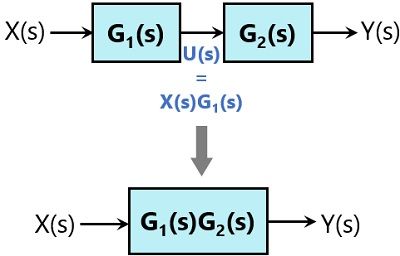
![Solved]: Find the Transfer function of the following bloc](https://media.cheggcdn.com/media/8a5/8a5cd5ac-e78e-40b2-b866-8b1ab47cf7ca/phpD0spIT)


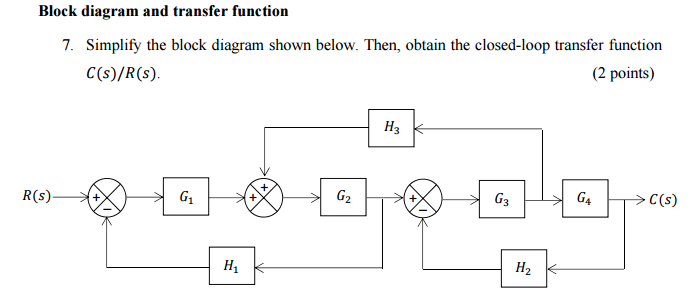
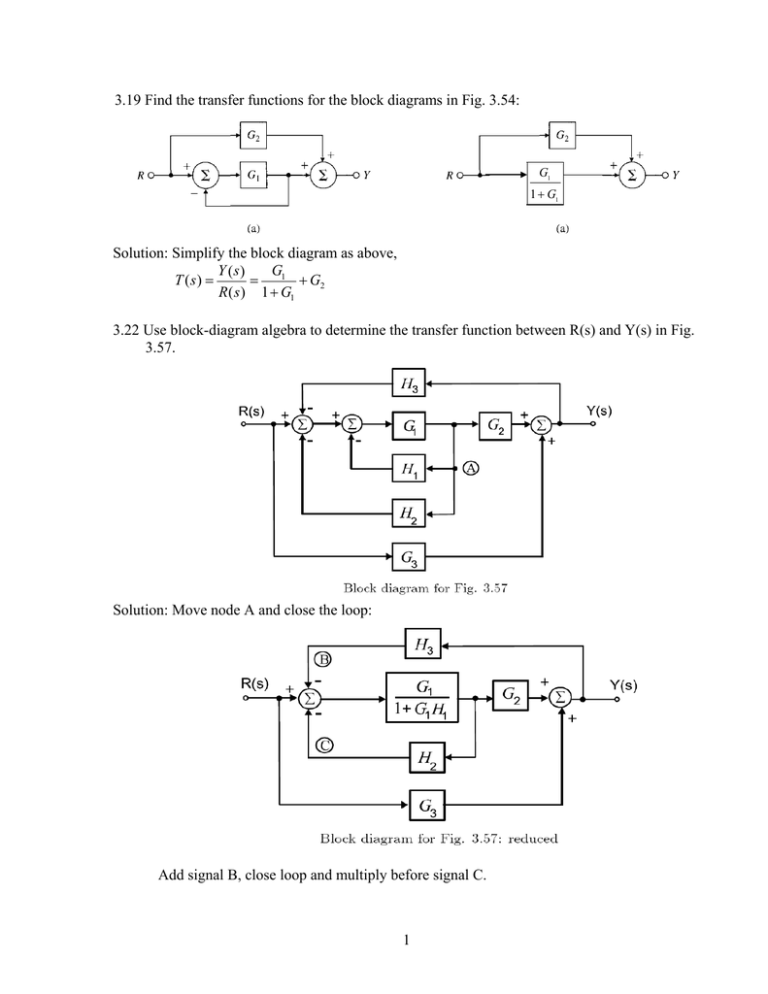
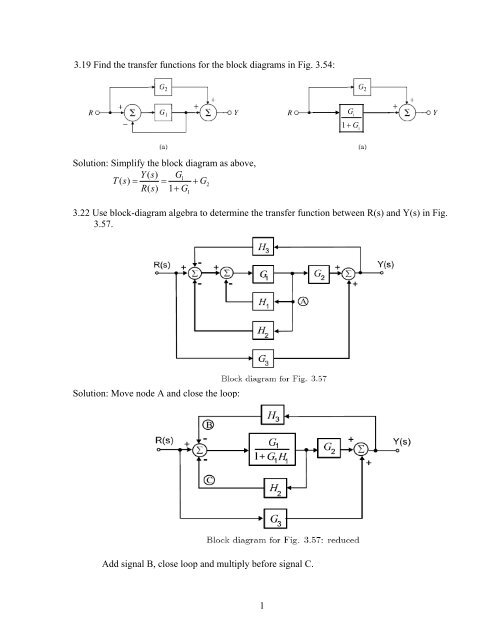
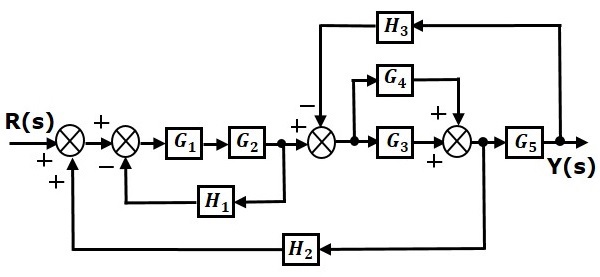

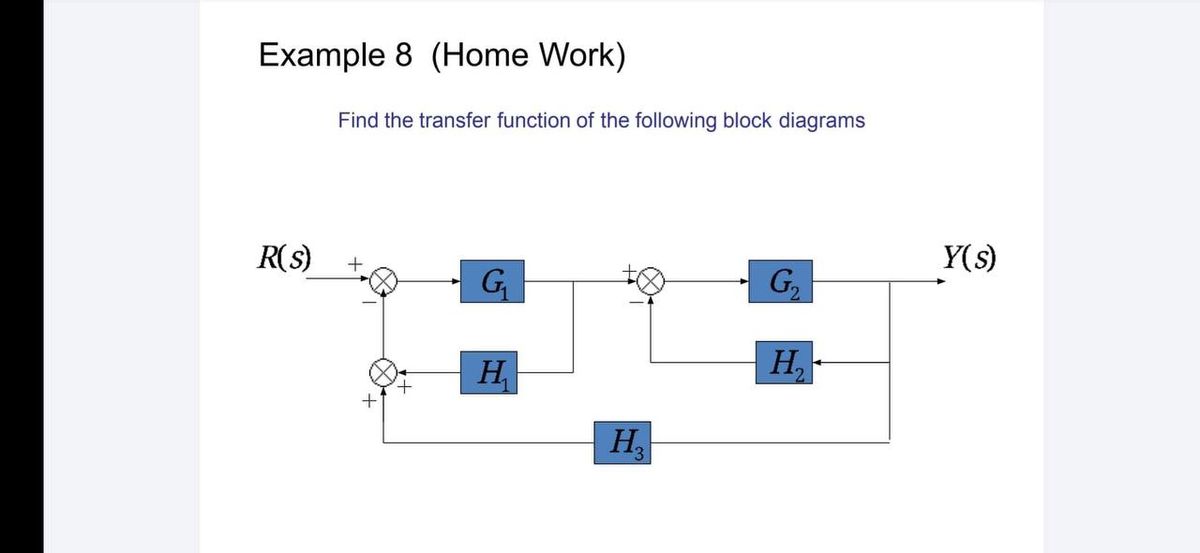
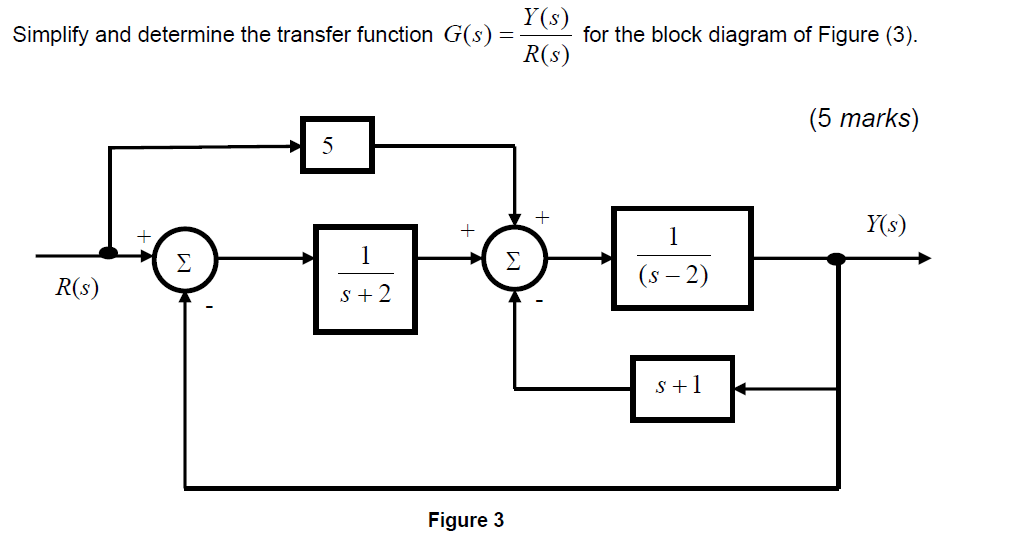

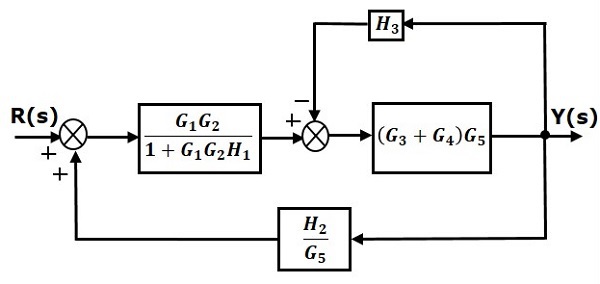




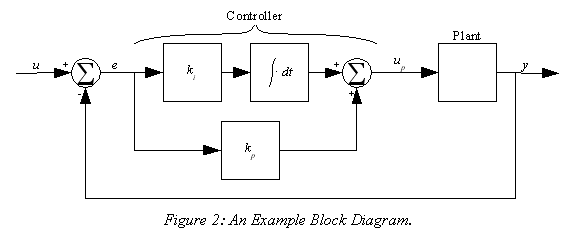



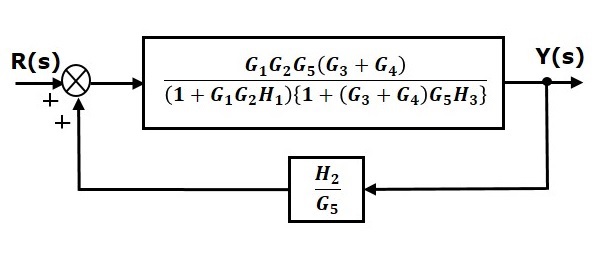
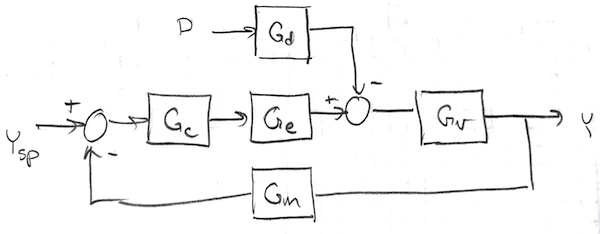


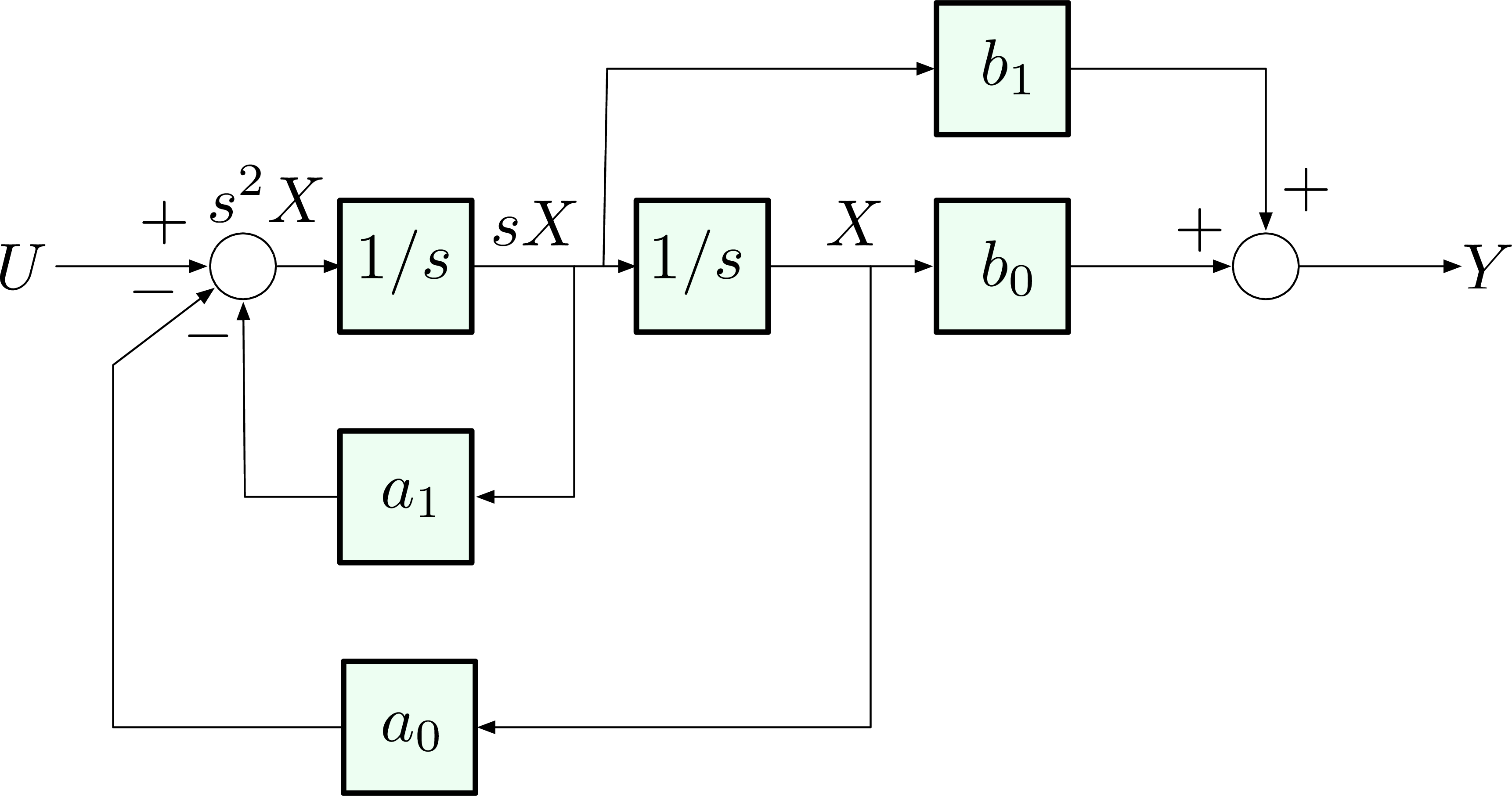



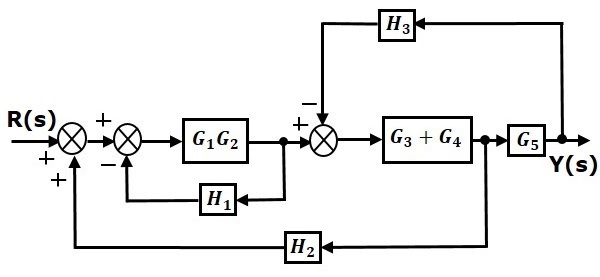
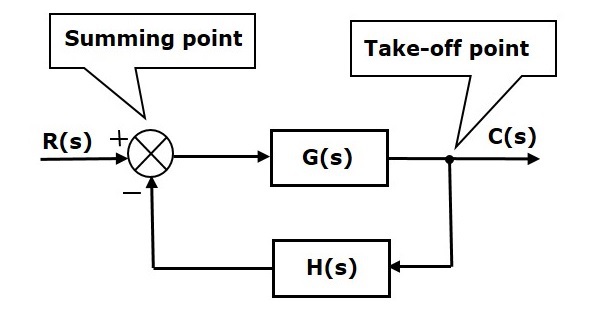

0 Response to "38 transfer function block diagram"
Post a Comment